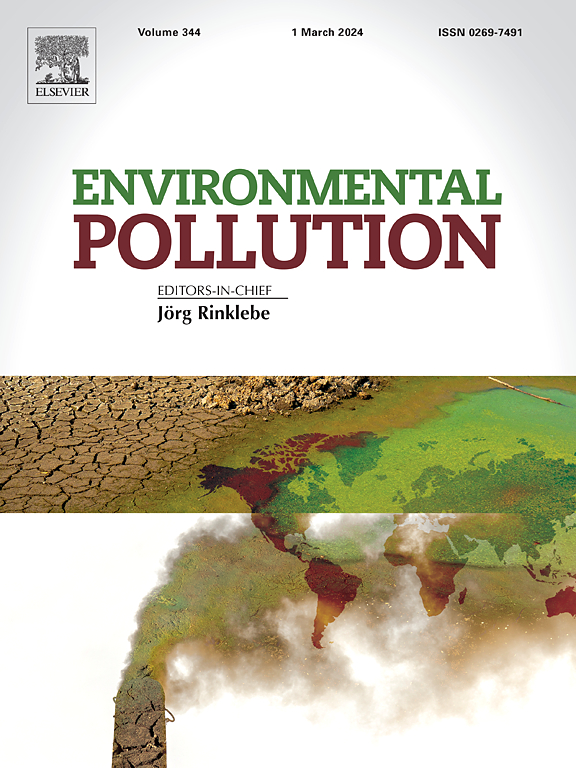Indonesia's country-specific CO2 emission factor based on gas fuels for greenhouse gas inventory in the energy sector
IF 7.6
2区 环境科学与生态学
Q1 ENVIRONMENTAL SCIENCES
引用次数: 0
Abstract
Indonesia currently calculates CO2 emissions from gas fuels using Tier 1 emission factors adopted from the Intergovernmental Panel on Climate Change (IPCC). However, this method may not accurately capture the country's specific emission characteristics. To address this, this study aims to derive country-specific CO2 emission factors for gas fuels, including liquefied petroleum gas (LPG), liquefied gas for vehicles (LGV), natural gas (NG), and liquefied natural gas (LNG), by analyzing fuel samples collected nationwide. A total of 128 LPG samples from 25 regions, 5 LGV samples from 2 regions, 23 NG samples from 11 regions, and 2 LNG samples from 2 regions were analyzed. Emission factors were determined based on gas composition, carbon content, and net calorific value. The uncertainties were calculated to reflect the contributions of all key parameters in the emission factor calculation. The results show that LPG has the highest EF Tier 2, while LNG has the lowest. The average country-specific CO2 emission factors for Indonesia are 65.41 ± 0.67 tCO2/TJ for LPG, 64.89 ± 0.07 tCO2/TJ for LGV, 57.64 ± 10.18 tCO2/TJ for NG, and 57.27 ± 9.50 tCO2/TJ for LNG. We expect stakeholders to incorporate these EF Tier 2 values into greenhouse gas reporting, enabling more accurate assessments of carbon footprints, supporting evidence-based policymaking, and strengthening Indonesia's climate action efforts.


印尼能源部门温室气体清单中基于气体燃料的国别二氧化碳排放系数
印度尼西亚目前使用政府间气候变化专门委员会(IPCC)采用的一级排放系数计算气体燃料的二氧化碳排放量。然而,这种方法可能无法准确捕捉到国家的具体排放特征。为了解决这个问题,本研究旨在通过分析全国收集的燃料样本,得出气体燃料的国别二氧化碳排放系数,包括液化石油气(LPG)、车辆用液化气体(LGV)、天然气(NG)和液化天然气(LNG)。共分析了来自25个地区的128个液化石油气样本、来自2个地区的5个LGV样本、来自11个地区的23个NG样本和来自2个地区的2个LNG样本。根据气体成分、碳含量和净热值确定排放因子。计算不确定度以反映各关键参数对排放因子计算的贡献。结果表明,液化石油气的EF Tier 2最高,液化天然气最低。印度尼西亚的平均国别二氧化碳排放系数为LPG 65.41±0.67 tCO2/TJ, LGV 64.89±0.07 tCO2/TJ, NG 57.64±10.18 tCO2/TJ, LNG 57.27±9.50 tCO2/TJ。我们希望利益相关方将这些EF Tier 2价值观纳入温室气体报告,从而更准确地评估碳足迹,支持循证决策,并加强印尼的气候行动努力。
本文章由计算机程序翻译,如有差异,请以英文原文为准。
求助全文
约1分钟内获得全文
求助全文
来源期刊

Environmental Pollution
环境科学-环境科学
CiteScore
16.00
自引率
6.70%
发文量
2082
审稿时长
2.9 months
期刊介绍:
Environmental Pollution is an international peer-reviewed journal that publishes high-quality research papers and review articles covering all aspects of environmental pollution and its impacts on ecosystems and human health.
Subject areas include, but are not limited to:
• Sources and occurrences of pollutants that are clearly defined and measured in environmental compartments, food and food-related items, and human bodies;
• Interlinks between contaminant exposure and biological, ecological, and human health effects, including those of climate change;
• Contaminants of emerging concerns (including but not limited to antibiotic resistant microorganisms or genes, microplastics/nanoplastics, electronic wastes, light, and noise) and/or their biological, ecological, or human health effects;
• Laboratory and field studies on the remediation/mitigation of environmental pollution via new techniques and with clear links to biological, ecological, or human health effects;
• Modeling of pollution processes, patterns, or trends that is of clear environmental and/or human health interest;
• New techniques that measure and examine environmental occurrences, transport, behavior, and effects of pollutants within the environment or the laboratory, provided that they can be clearly used to address problems within regional or global environmental compartments.
 求助内容:
求助内容: 应助结果提醒方式:
应助结果提醒方式:


